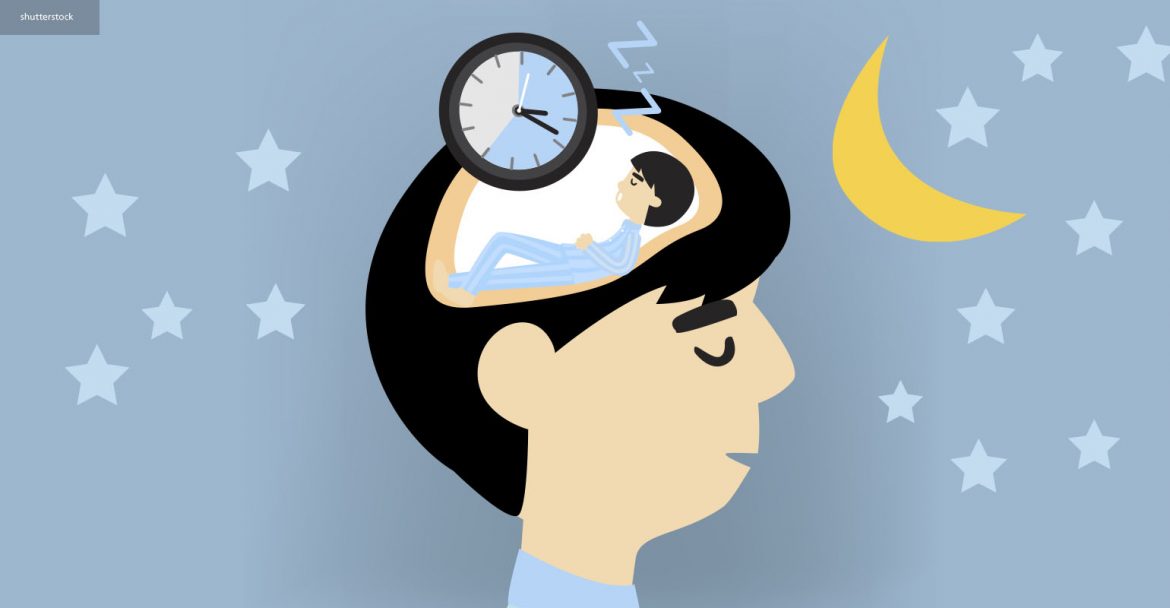A recent study reveals that the sleep-related brain activity of young people with genetic changes that raise the risk of psychiatric disorders differs significantly from that of healthy young people.
1 in 3000 births result in 22q11.2DS, which is brought on by a gene loss of about 30 genes on chromosome 22. It raises the chance of epileptic seizures, autism spectrum disorder (ASD), intellectual disability, and attention-deficit hyperactivity disorder (ADHD). Additionally, it ranks highly among the biological risk factors for schizophrenia. Uncertainty surrounds the molecular processes that underlie the psychological symptoms of 22q11.2DS, though.
According to co-senior author Marianne van den Bree, Professor of Psychological Medicine at Cardiff University, UK, “We have recently shown that the majority of young people with 22q11.2DS have sleep problems, particularly insomnia and sleep fragmentation, that are linked with psychiatric disorders.” The neurophysiology—what is happening to brain activity—has not yet been investigated because our earlier investigation was based on parents reporting on their children’s sleep quality.
An electroencephalogram is a recognised method of assessing brain activity while you are sleeping (EEG). This monitors electrical activity as you sleep and includes spindle and slow-wave (SW) oscillation patterns. These characteristics of non-rapid eye movement (NREM) sleep are thought to support the development of the brain and memory.
According to co-senior author Marianne van den Bree, Professor of Psychological Medicine at Cardiff University, UK, “We have recently shown that the majority of young people with 22q11.2DS have sleep problems, particularly insomnia and sleep fragmentation, that are linked with psychiatric disorders.” The neurophysiology—what is happening to brain activity—has not yet been investigated because our earlier investigation was based on parents reporting on their children’s sleep quality.
An electroencephalogram is a recognised method of assessing brain activity while you are sleeping (EEG). This monitors electrical activity as you sleep and includes spindle and slow-wave (SW) oscillation patterns. These characteristics of non-rapid eye movement (NREM) sleep are thought to support the development of the brain and memory.
Lead author Nick Donnelly, Clinical Lecturer in General Adult Psychiatry at the University of Bristol, UK, said: “Sleep EEG is known to be disrupted in many neurodevelopmental diseases, and the characteristics and coordination of these abnormalities can be utilised as biomarkers for psychiatric dysfunction.”
In order to investigate this in 22q11.2DS, the team recruited 28 children between the ages of 6 and 20 who had the chromosome deletion as well as 17 siblings who were unaffected as part of the Cardiff University Experiences of Children with Copy Number Variants (ECHO) study, which is headed by Prof. van den Bree. They examined the relationships between mental symptoms and sleep EEG patterns, as well as how well the subjects performed in a morning recall test.
They discovered that, in comparison to their siblings, the group with 22q11.2DS showed substantial differences in their sleep patterns, with higher proportions of N3 NREM sleep (slow-wave sleep) and lower proportions of N1 (the first and lightest sleep stage) and rapid eye movement (REM) sleep. Additionally, those who had the chromosomal deletion had higher slow-wave oscillation and spindle EEG power. Additionally, there was a tighter link between the spindle and slow-wave EEG features and an increase in the frequency and density of spindle patterns in the 22q112.DS group. The connections inside and between the cortex and thalamus, the brain regions that produce these oscillations, may have changed as a result of these modifications.
Before going to bed, participants had to remember where matching cards were on a screen for a 2D object finding test. The group discovered that higher spindle and SW amplitudes were related to decreased accuracy in those with 22q11.2DS when they were assessed again on the identical task in the morning. In contrast, higher amplitudes were associated with greater accuracy in the morning memory test in persons who did not have the chromosomal deletion.
Finally, the team used a statistical technique known as mediation to calculate the effect of the variations in sleep patterns on psychiatric symptoms in the two groups.
They determined the overall impact of genotype on IQ and psychiatric measurements, as well as the indirect (mediated) impact of EEG measurements. Finally, they computed the percentage of the overall impact that might be mediated by EEG patterns. They discovered that the 22q11 was responsible with the impacts on anxiety, ADHD, and ASD. 2 deletion were mediated in part by variations in sleep EEG.
According to co-senior author Matt Jones, Professorial Research Fellow in Neuroscience, University of Bristol, UK, “our EEG findings collectively suggest a complex picture of sleep neurophysiology in 22q11.2DS and highlight differences that could serve as potential biomarkers for 22q11.2DS-associated neurodevelopmental syndromes.”
In order to identify signs of brain circuit failure that could let doctors know which patients are more at risk and support treatment choices, more research is now required to define the association between mental health symptoms, sleep EEG measurements, and neurodevelopment.





